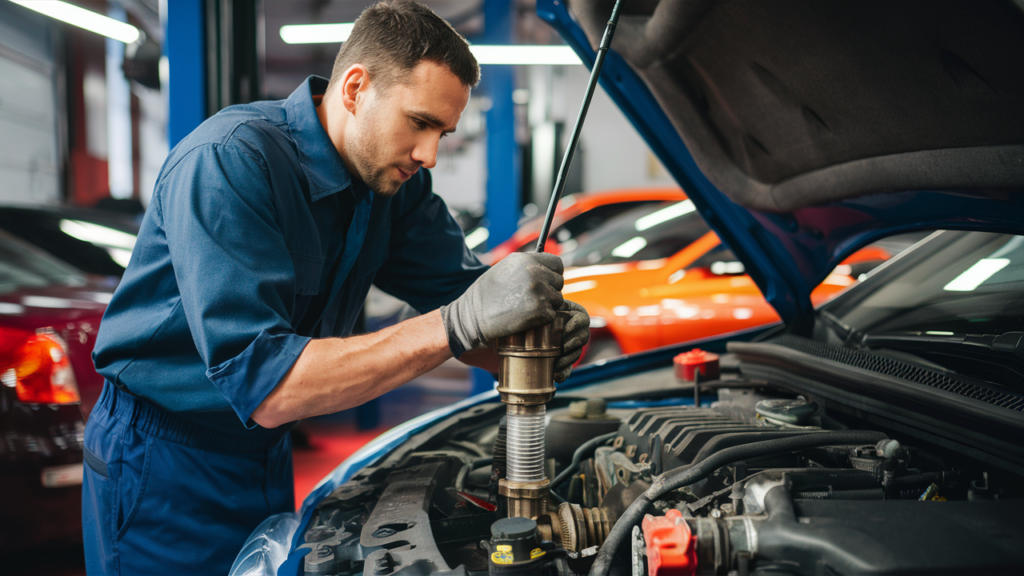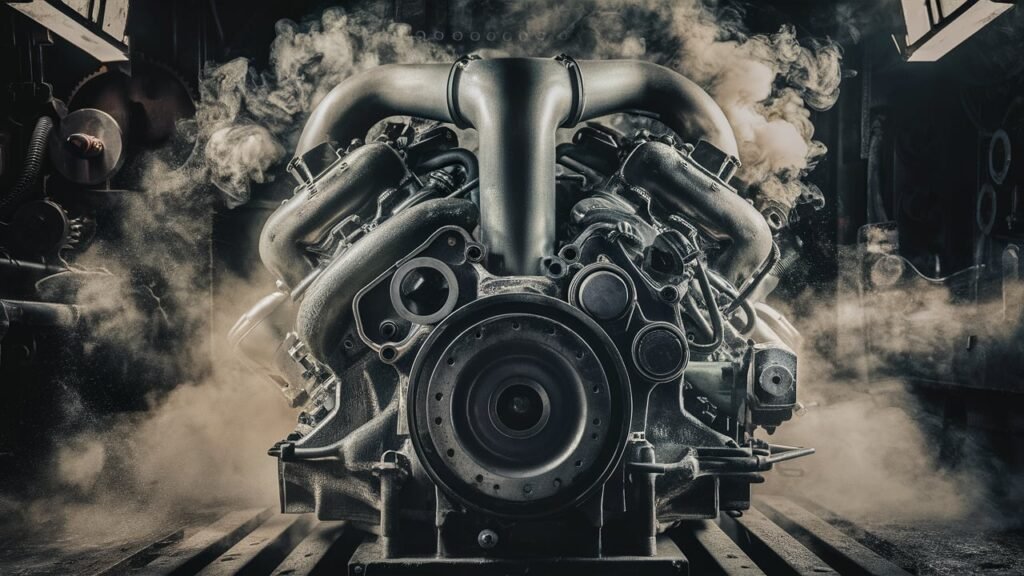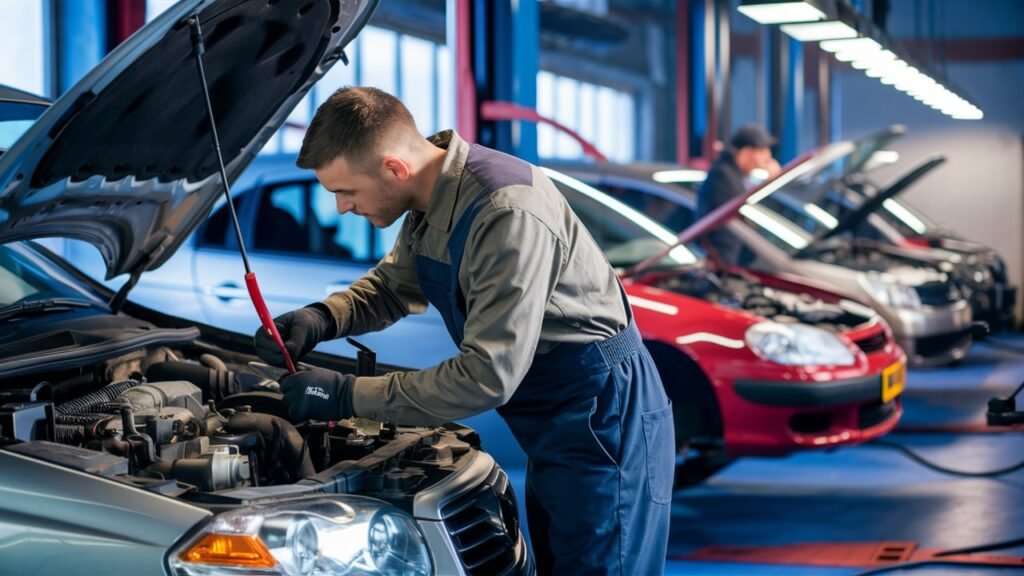
Unveiling the Inner Workings of a Car Engine Water Pump
In the intricate ballet of components that compose a vehicle’s internal combustion system, the car engine water pump stands as a silent guardian, ensuring the orchestra of machinery performs harmoniously.
Crucial to the cooling system’s efficiency, this unassuming yet indispensable device plays a pivotal role in maintaining optimal operating temperatures within an automotive engine. Understanding how this unsung hero operates is not merely a matter of curiosity for the enthusiast or mechanic, but rather a journey into the heart of vehicular function.
A quintessential component in an automobile’s thermal management architecture, a car engine water pump orchestrates the circulation of coolant through critical channels, preventing overheating and safeguarding against catastrophic malfunctions.
Straddling the realms of fluid dynamics and mechanical precision, this apparatus embodies synergy between engineering prowess and fundamental thermodynamic principles. As we unravel the inner machinations of this essential cog in the automotive ensemble, let us delve into the concealed intricacies that dictate performance outcomes on our roads and racetracks alike.
Step by step, we unveil how this unpretentious yet formidable element propels us forward with unparalleled reliability and resolve amidst the ebb and flow of vehicular exigencies.
Understanding the Role of a Water Pump.
A water pump in a car’s engine is a crucial component responsible for maintaining the optimal operating temperature of the engine. Its primary purpose is to circulate coolant throughout the engine block, cylinder heads, radiator, and other components to dissipate heat generated during combustion efficiently.
Without a functioning water pump, the engine would quickly overheat, leading to potential damage such as warped cylinder heads or even total engine failure.
The importance of a properly functioning water pump cannot be overstated when considering its impact on overall engine performance. A well-maintained water pump ensures that the cooling system operates at peak efficiency, allowing the engine to run at its optimal temperature range.

This not only contributes to better fuel combustion but also safeguards against overheating-related issues that could compromise the engine’s durability and longevity.
In essence, the water pump functions as the heart of the car’s cooling system by continuously circulating coolant through a series of hoses, passages, and components. By driving this coolant flow, the water pump draws heat away from critical areas within the engine and transfers it to the radiator for dissipation into the surrounding air.
This process effectively regulates the engine temperature within safe limits, thereby preventing overheating scenarios that can cause catastrophic damage if left unchecked.
Components of a Car Engine Water Pump.
The car engine water pump is an intricate system composed of various key components that work harmoniously to ensure effective coolant circulation within the engine. The main components of a typical car engine water pump include the impeller, housing, bearings, seals, and drive belt pulley.
The impeller, often made of durable materials like cast iron or aluminum alloy, plays a crucial role in propelling coolant through the engine’s cooling system. It is designed with curved blades to efficiently move the coolant and maintain optimal temperatures during operation.
The housing serves as the casing that encloses the impeller and creates a sealed chamber where the coolant flows through. It is essential for maintaining pressure and directing the coolant flow in the proper direction within the system.
Bearings are integral components that support the rotating shaft of the pump, enabling smooth movement and reducing friction during operation. Seals play a vital role in preventing leaks by sealing gaps between moving parts to maintain a closed system.
Proper maintenance of these components is essential for ensuring efficient cooling system performance and preventing potential breakdowns due to wear and tear.
Regular inspection and maintenance of each component are crucial for prolonging the lifespan of a car engine water pump. For instance, checking for any signs of leakage from seals or unusual noise coming from bearings can help identify potential issues early on.
Additionally, ensuring that the impeller rotates freely without any obstructions or damage can prevent overheating problems caused by inadequate coolant circulation. By understanding how each component functions within the water pump system and proactively addressing maintenance needs, automotive enthusiasts and mechanics can optimize their vehicle’s cooling system performance effectively.
Types of Water Pumps Used in Car Engines.
When it comes to water pumps used in car engines, two primary types are prevalent: mechanical and electric. Mechanical water pumps have been a traditional choice in automotive systems for their simplicity and reliability.
These pumps are typically driven by a belt connected to the engine, allowing them to operate efficiently without additional power sources. On the other hand, electric water pumps are gaining popularity for their ability to provide precise control over coolant flow rates and temperature regulation.
They operate independently of the engine speed, offering more flexibility in managing cooling system performance.
Each type of water pump has its set of advantages and disadvantages that cater to different applications. Mechanical water pumps are known for their robustness and cost-effectiveness, making them suitable for standard vehicles where consistent cooling performance is essential.

However, they may draw power from the engine, leading to a slight decrease in overall efficiency. Electric water pumps excel in performance optimization by adjusting coolant flow based on real-time demands, enhancing fuel efficiency and reducing emissions.
Nevertheless, the complexity of electronic components can pose maintenance challenges and higher initial costs compared to mechanical counterparts.
When selecting the appropriate water pump type for specific vehicles, several factors need consideration. The vehicle’s intended use, such as daily commuting or high-performance driving, will influence the choice between mechanical and electric pumps.
Additionally, aspects like ease of installation, long-term reliability, energy efficiency requirements, and compatibility with existing engine configurations play significant roles in determining the most suitable option.
For example, high-performance sports cars might benefit more from electric water pumps due to their precision control capabilities during demanding driving conditions. Conversely, classic or vintage cars may stick with mechanical variants for authenticity and straightforward maintenance procedures.
Installation and Maintenance Procedures.
Installing or replacing a car engine water pump accurately is crucial for the optimal functioning of the cooling system. Here is a step-by-step guide to ensure this process is conducted effectively:
1. **Prepare the Vehicle**: Begin by turning off the engine and allowing it to cool down. Disconnect the negative battery cable for safety.
2. **Locate the Water Pump**: Depending on your vehicle, remove any components obstructing access to the water pump, such as belts or hoses.
3. **Remove Old Pump**: Drain the coolant carefully, then detach the old water pump from the engine block.
4. **Install New Pump**: Position the new water pump correctly and secure it in place following manufacturer guidelines.
5. **Reassemble Components**: Reattach any hoses, belts, or other parts previously removed before refilling with fresh coolant.

Proper maintenance practices can significantly extend the lifespan of a car engine water pump while ensuring smooth operation. Regularly check for leaks, inspect connections for tightness, and monitor coolant levels to prevent overheating.
Common issues related to water pumps include leaks, noise from bearing failure, or impeller damage leading to inadequate circulation. To troubleshoot these problems effectively:
– Inspect for visible leaks and tighten connections if necessary.
– Listen for unusual noises indicating bearing wear and consider replacement.
– Check impeller condition and replace if signs of deterioration are observed.
By adhering to installation protocols and implementing proactive maintenance routines, you can maximize the efficiency and longevity of your car engine water pump, thus safeguarding your vehicle’s cooling system performance.
Performance Indicators and Diagnostics.
To ensure the optimal functioning of a car engine water pump, it is essential to be aware of potential signs that indicate impending issues. One common indicator of a failing water pump is overheating of the engine.
If your vehicle’s temperature gauge spikes unexpectedly or if you notice coolant leaks beneath the engine, it could signify a problem with the water pump. Additionally, strange noises emanating from the front of the engine, often resembling a whining sound, might suggest bearing failure within the water pump assembly.
Diagnosing water pump problems early can prevent more severe issues down the line. A systematic approach involves checking for coolant leaks around the water pump seal and inspecting the drive belt for any signs of wear or looseness.

Furthermore, performing a visual inspection of the weep hole—a small hole located underneath the pulley—can reveal coolant leakage, indicating an internal seal failure. By conducting these checks regularly and proactively addressing any red flags, you can mitigate potential damages and costly repairs associated with a malfunctioning water pump.
Regular monitoring of performance indicators is paramount for ongoing preventive maintenance in vehicles. Implementing routine checks on coolant levels, observing fluctuations in temperature gauges during driving conditions, and listening for unusual sounds can offer valuable insights into the health of your car’s cooling system.
By staying vigilant and swiftly addressing any abnormalities detected during these assessments, you can uphold the efficiency and longevity of your car engine water pump while safeguarding overall engine performance.
Advanced Technologies in Water Pump Systems.
Modern car engine water pumps have evolved significantly with the integration of advanced technologies that enhance performance and efficiency. One notable innovation is the implementation of smart cooling systems, which utilize sensors and algorithms to regulate coolant flow based on real-time temperature data.
These intelligent systems optimize cooling effectiveness by adjusting pump speed and coolant circulation as needed, ensuring that the engine operates at ideal temperatures under varying conditions. By efficiently managing heat dissipation, smart cooling systems not only improve engine performance but also contribute to extending the lifespan of components.
Another notable advancement in water pump technology is the incorporation of variable speed pumps. Unlike traditional pumps that operate at a fixed speed, variable speed pumps adjust their rotation rates according to engine demands.
This dynamic control allows for precise coolant delivery based on workload requirements, resulting in more effective heat transfer and reduced energy consumption.
Variable speed pumps are particularly beneficial in vehicles with fluctuating operating conditions, providing optimized cooling capabilities while conserving power. Additionally, these pumps help prevent overcooling or overheating scenarios by adapting to changing thermal loads swiftly.
The integration of these advanced features into car engine water pumps offers several benefits that go beyond basic cooling functions. Smart cooling systems and variable speed pumps not only enhance fuel efficiency by reducing unnecessary coolant circulation but also promote overall engine health by maintaining optimal operating temperatures consistently.
By boosting efficiency and performance, these technological advancements play a crucial role in improving the sustainability and reliability of automotive cooling systems, ultimately contributing to a more eco-friendly driving experience across various vehicle platforms.
Environmental Impact and Future Trends.
In recent years, the automotive industry has been increasingly focused on sustainability, pushing for the development of eco-friendly materials and manufacturing processes in car engine components. The water pump, a crucial element of a vehicle’s cooling system, is also undergoing changes to align with these environmentally conscious practices.
Manufacturers are exploring alternatives to traditional materials like plastic and metals by incorporating more recycled or biodegradable components in water pumps. This shift not only reduces the environmental impact of production but also contributes to a circular economy approach within the automotive sector.

Looking ahead, future trends in car engine cooling systems point towards advancements in water pump technology aimed at enhancing efficiency while minimizing ecological footprints. Innovations such as smart cooling systems that regulate coolant flow based on real-time temperature data or variable speed pumps that adjust output according to engine demand are gaining traction.
These technologies not only improve overall engine performance but also play a pivotal role in reducing energy consumption and emissions associated with vehicle operation. By optimizing the function of water pumps through innovative designs, manufacturers are striving to make significant contributions to environmental preservation.
The incorporation of sustainable practices in manufacturing water pumps not only serves environmental goals but also aligns with regulatory standards aimed at mitigating carbon emissions from vehicles.
As stricter regulations regarding emissions come into effect globally, the automotive industry is under pressure to adopt greener technologies throughout its supply chain, including essential components like water pumps.
By investing in research and development for eco-friendly materials and advancing water pump technology, car manufacturers can proactively reduce their environmental impact while meeting evolving regulatory requirements.
Ultimately, the convergence of sustainability initiatives and technological innovations in water pump systems heralds a promising future for environmentally conscious automotive engineering practices.
Conclusion: Enhancing Car Engine Performance Through Water Pump Knowledge.
In conclusion, it is evident that the car engine water pump stands as a critical component in the intricate cooling system of an automobile. A well-functioning water pump plays a pivotal role in maintaining optimal engine health by ensuring proper coolant circulation to dissipate excess heat.
Understanding the inner workings and significance of the water pump not only enhances overall engine performance but also contributes to extending the longevity of the vehicle. Properly managing and maintaining the car’s cooling system is paramount for long-term efficiency and reliability.
By delving into the components, functions, types, maintenance procedures, diagnostic methods, and advancements associated with car engine water pumps, automotive enthusiasts, mechanics, and engineering students can arm themselves with essential knowledge to keep engines running smoothly.
Ultimately, this comprehensive understanding empowers individuals to proactively address any issues related to their vehicle’s cooling system and preemptively take measures to prevent costly repairs or breakdowns. Embracing water pump knowledge is key to unlocking enhanced car engine performance and ensuring a well-maintained vehicle for years to come.




